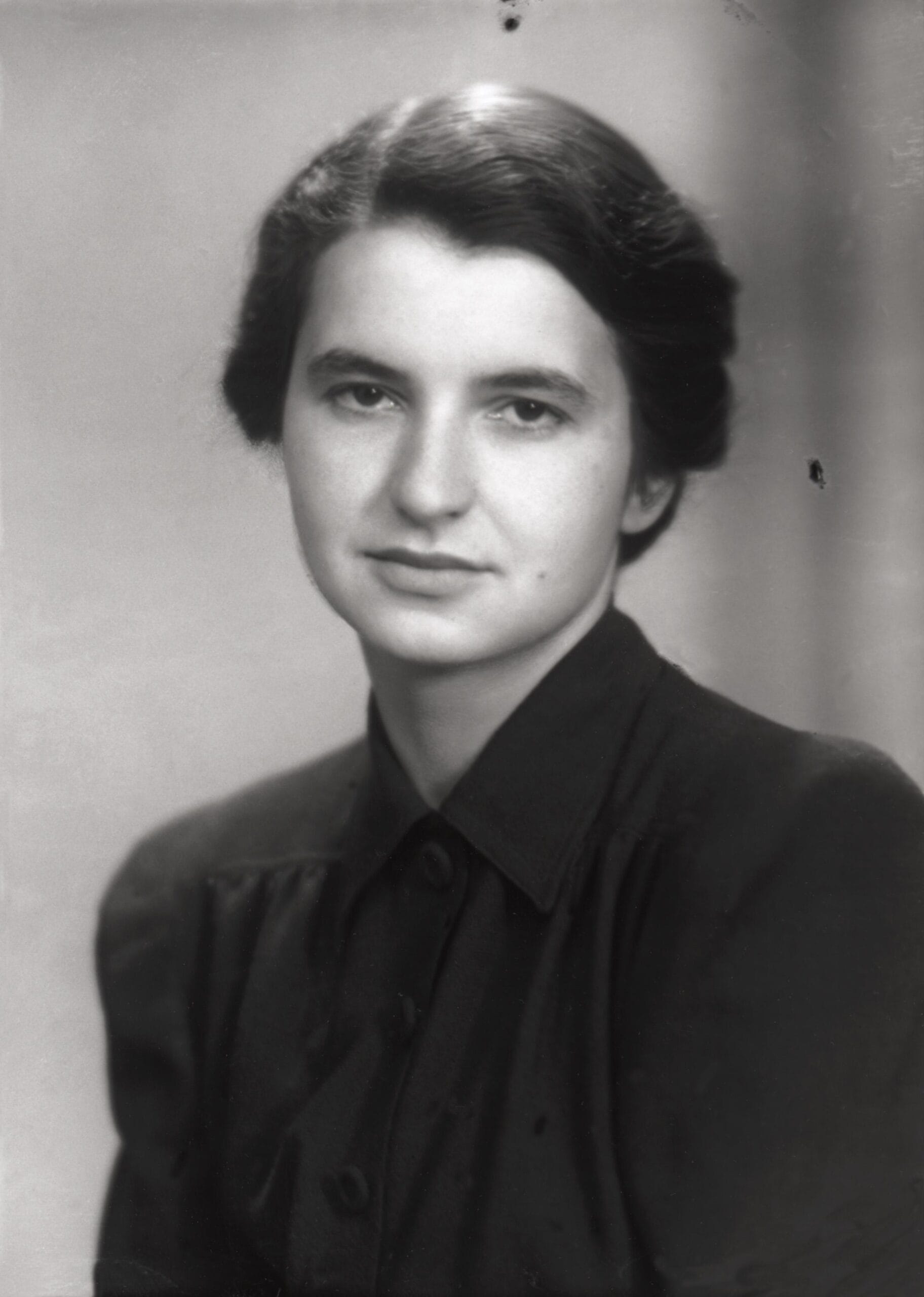Rosalind Franklin (1920-1958) was a British biophysicist and X-ray crystallographer who made significant contributions to the understanding of the molecular structures of DNA, RNA, viruses, coal, and graphite. Her work played a crucial role in the discovery of the DNA double helix structure. Unfortunately, Franklin’s achievements were often overshadowed during her lifetime, but her legacy has since been recognized for its pivotal role in molecular biology and genetics.
Growing up in an intellectually stimulating environment, Franklin displayed an early interest in science. Her father, Ellis Franklin, was a prosperous merchant banker, and her mother, Muriel Franklin, came from a family with a tradition of public service. Rosalind attended St Paul’s Girls’ School in London, where her aptitude for science became evident. Her outstanding academic achievements earned her a scholarship to study at Newnham College, Cambridge, in 1938.
At Cambridge, Franklin pursued a degree in natural sciences, specializing in physical chemistry. She excelled in her studies, earning a degree with second-class honors in 1941. World War II was ongoing, and Franklin contributed to the war effort by working on the physical chemistry of coal at the British Coal Utilisation Research Association.
After the war, Franklin’s academic journey continued at the Laboratoire Central des Services Chimiques de l’État in Paris, where she earned a Ph.D. in physical chemistry in 1945. Her doctoral research focused on the porosity of coal, showcasing her analytical and experimental skills. Franklin’s time in Paris exposed her to cutting-edge scientific techniques and provided her with a valuable international perspective.
In 1951, Franklin returned to England and joined the Medical Research Council (MRC) Biophysics Unit at King’s College, London, led by Sir John Randall. This marked a significant shift in her research focus, as she transitioned from coal chemistry to biophysics. At King’s College, Franklin embarked on a series of experiments using X-ray crystallography to study the structure of DNA fibers.
Her work at King’s College coincided with a surge of interest in the structure of DNA. Maurice Wilkins, another scientist at King’s, had been using X-ray crystallography to investigate DNA fibers independently. The collaboration between Franklin and Wilkins, however, was fraught with interpersonal and communication challenges.
In 1952, a pivotal moment occurred when a research student at King’s, Raymond Gosling, produced a high-resolution X-ray photograph of DNA fibers, known as Photograph 51. This image captured the essence of DNA’s helical structure and provided crucial information about the spacing of its molecular components. Franklin’s expertise in X-ray crystallography played a central role in obtaining this groundbreaking image.
In the same year, while Franklin was away from King’s College, James Watson and Francis Crick, working at the Cavendish Laboratory in Cambridge, used Franklin’s Photograph 51, along with other scientific insights, to propose the double helical structure of DNA. Their model, published in a landmark paper in Nature in 1953, revolutionized our understanding of genetics and laid the groundwork for subsequent advancements in molecular biology.
The discovery of the DNA double helix was a watershed moment in science, but it came with controversy and debates about the role of each contributor. Franklin’s significant contribution through her meticulous X-ray crystallography work was sometimes overshadowed. The Nobel Prize in Physiology or Medicine awarded in 1962 for the discovery of the structure of DNA went to Watson, Crick, and Wilkins. Franklin, who had passed away in 1958 at the age of 37, was ineligible for the Nobel Prize posthumously.
Rosalind Franklin’s scientific achievements extend beyond the study of DNA. Her work on the tobacco mosaic virus and RNA viruses, conducted during her time at Birkbeck College in London, contributed significantly to the understanding of the structure of viruses. Franklin’s expertise in X-ray crystallography and her commitment to precision and accuracy elevated her to a prominent position in the scientific community.
Apart from her scientific contributions, Franklin faced challenges related to gender bias in the scientific community. At times, she encountered a lack of recognition and opportunities due to prevailing gender norms. Despite these challenges, she persisted in her pursuit of scientific excellence, earning respect for her dedication to rigorous experimentation and analysis.
Rosalind Franklin’s untimely death in 1958 resulted from complications related to ovarian cancer, likely aggravated by her exposure to X-rays during her research. Her passing at the age of 37 marked the loss of a brilliant mind and a pioneering scientist. In the years following her death, the scientific community has recognized the significance of Franklin’s contributions to molecular biology.
In recent decades, there has been a reevaluation of Rosalind Franklin’s role in the discovery of the DNA structure. The importance of her X-ray crystallography data, including Photograph 51, has been acknowledged more widely. While the Nobel Prize eluded her, Franklin’s legacy has been celebrated through various honors and commemorations.
The Rosalind Franklin University of Medicine and Science, located in North Chicago, Illinois, stands as a testament to her impact on the field of medicine and science education. The university embraces Franklin’s dedication to research and innovation. Additionally, the Rosalind Franklin Award, established by the Royal Society in the United Kingdom, recognizes the contributions of women in science.
Rosalind Franklin’s life and career symbolize resilience, intellectual rigor, and a commitment to advancing scientific knowledge. Her pioneering work in X-ray crystallography paved the way for breakthroughs in molecular biology, and her legacy continues to inspire scientists, particularly women, to pursue careers in STEM fields. In celebrating Rosalind Franklin’s contributions, it is crucial to acknowledge the importance of diversity and inclusivity in fostering scientific innovation and discovery.
